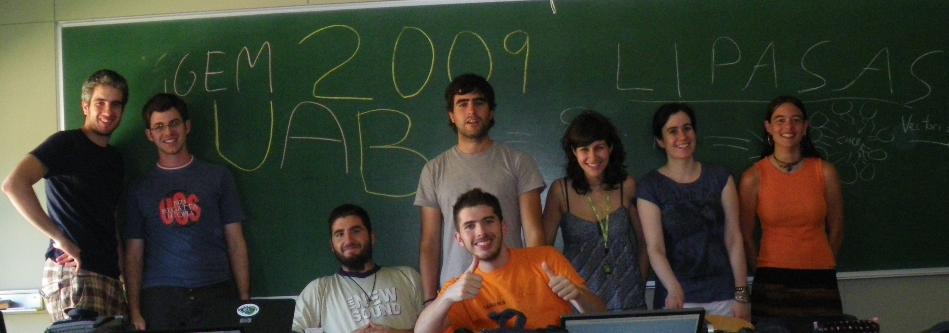Team:UAB-Barcelona
From 2009.igem.org
| Line 15: | Line 15: | ||
== '''WHO WE ARE (without instructors...coming soon)''' == | == '''WHO WE ARE (without instructors...coming soon)''' == | ||
[[Image:totsigem.jpg|965px|right]] | [[Image:totsigem.jpg|965px|right]] | ||
| + | |||
== '''ACKNOWLEDGEMENTS''' == | == '''ACKNOWLEDGEMENTS''' == | ||
| + | |||
<html> | <html> | ||
<a href=http://www.uab.es/english/><img src=https://static.igem.org/mediawiki/2009/6/64/Uab_logo2.png></a> | <a href=http://www.uab.es/english/><img src=https://static.igem.org/mediawiki/2009/6/64/Uab_logo2.png></a> | ||
| Line 22: | Line 24: | ||
<a href=http://eq3.uab.es/><img src=https://static.igem.org/mediawiki/2009/3/35/LogoDEQ.jpg></a> | <a href=http://eq3.uab.es/><img src=https://static.igem.org/mediawiki/2009/3/35/LogoDEQ.jpg></a> | ||
| + | <a href="http://www2.clustrmaps.com/counter/maps.php?url=https://2009.igem.org/Team:UAB-Barcelona" id="clustrMapsLink"><img src="http://www2.clustrmaps.com/counter/index2.php?url=https://2009.igem.org/Team:UAB-Barcelona" style="border:0px;" alt="Locations of visitors to this page" title="Locations of visitors to this page" id="clustrMapsImg" onerror="this.onerror=null; this.src='http://clustrmaps.com/images/clustrmaps-back-soon.jpg'; document.getElementById('clustrMapsLink').href='http://clustrmaps.com';" /> | ||
| + | </a> | ||
</html> | </html> | ||
Revision as of 10:29, 25 August 2009
BACKGROUND
|
The Universitat Autònoma of Barcelona (UAB) is one of the most prestigious universities of Spain, pioneer in investigation and innovation. Our project will be developed in the Chemical Engineering School laboratories, under supervision of the professors Juan Antonio Baeza Labat, Joan Albiol Sala and Pau Ferrer Alegre. Eight students will be part of the team: three biotechnologists and two chemical engineers from the UAB, and three Pharmacy students, two from the University of Granada and one from the University of Santiago. Our project will consist of developing an Escherichia coli biosensor that could detect trihalomethanes in water. The idea is using a protein called gfp which expression can be induced by these pollutants. This enzyme produces, in presence of ATP and O2, a light-emitting substance, which constitutes the signal that reveals those substances. Using E. coli brings some advantages: it’s easy to manipulate and culture and its genome is well-known and deeply studied. |
|---|
WHO WE ARE (without instructors...coming soon)
 "
"



